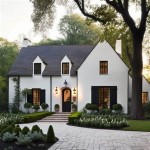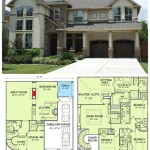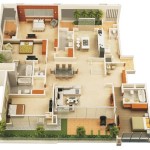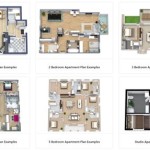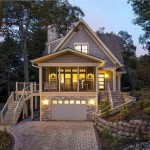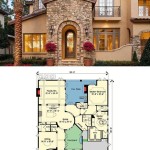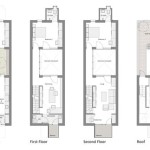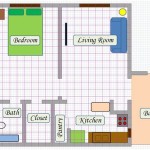```html
Four Bedroom Home Floor Plans: Design Options and Considerations
Four bedroom home floor plans are a popular choice for growing families, multi-generational households, or individuals who desire ample space for guests and hobbies. The design of a four bedroom home offers a blend of privacy and communal living, requiring careful consideration of spatial arrangement, flow, and functionality. This article will explore various design options, key considerations, and common layouts associated with four bedroom home floor plans.
The versatility of a four bedroom layout stems from the numerous ways the space can be allocated. Beyond the core function of bedrooms, these rooms can serve as home offices, guest rooms, playrooms, or dedicated hobby spaces. The placement of these rooms in relation to each other and the rest of the house significantly impacts the overall livability and utility of the home.
Zoning and Bedroom Placement
One crucial aspect of designing a four bedroom home floor plan is the strategic zoning of the bedrooms. Common approaches include grouping all bedrooms together, separating the master suite from the other bedrooms, or creating distinct zones for different family members or functions. The choice depends on the desired level of privacy and the specific needs of the occupants.
The typical layout involves grouping all four bedrooms together on the upper level of a two-story home. This arrangement provides a clear separation between the sleeping quarters and the main living areas downstairs, enhancing privacy and minimizing noise transfer. This is often preferred in homes with young children, allowing parents easier access during the night.
Alternatively, the master suite can be strategically placed on the opposite side of the house from the other three bedrooms. This arrangement offers a higher degree of privacy for the homeowners and can be particularly appealing to families with older children or those who frequently entertain guests. The master suite often includes a private bathroom, walk-in closet, and potentially a sitting area, further isolating it from the other living spaces.
Another zoning strategy involves creating separate wings for different purposes. For example, two bedrooms might be grouped together as a children's wing, complete with a shared bathroom and play area. The other two bedrooms, including the master suite, could be located on the opposite side of the house, providing a distinct separation of space and functionality.
Single-story homes offer different considerations for bedroom placement. In a ranch-style house, the bedrooms are typically located along one side of the house, while the living areas occupy the other. Careful planning is needed to minimize noise transmission between the living areas and bedrooms, especially if one room is used as a home office or media room.
Bathroom Considerations
The number and placement of bathrooms are a critical component of a four bedroom home floor plan. A minimum of two full bathrooms is generally recommended, with one being a private ensuite bathroom connected to the master bedroom. A third bathroom, potentially a jack-and-jill style shared by two bedrooms, can significantly enhance convenience and functionality, especially for larger families.
The arrangement of bathrooms should align with the zoning of the bedrooms. If all four bedrooms are grouped together, a centrally located bathroom accessible from the hallway is essential. If the master suite is separated, the ensuite bathroom provides privacy and convenience, mitigating the need for the homeowners to share the main bathroom with other occupants.
The size and features of each bathroom should be proportionate to its intended use. The master bathroom typically includes a larger footprint with features such as a double vanity, separate shower and bathtub, and a private toilet room. The other bathrooms can be more compact, focusing on functionality and efficient use of space. Powder rooms, containing only a toilet and sink, are often strategically located near the entrance or living areas for guest use.
Accessibility considerations are also important. At least one bathroom should be designed with accessibility features, such as grab bars and a roll-in shower, to accommodate individuals with mobility limitations. This is particularly relevant in multi-generational homes or for aging in place.
Layout and Flow
The overall layout and flow of a four bedroom home floor plan significantly impact its usability and comfort. Open-concept designs, where the kitchen, dining area, and living room flow seamlessly together, are popular for their spaciousness and social connectivity. However, closed-concept designs, where rooms are more defined and separated, can offer greater privacy and noise control.
The placement of the kitchen is critical. Ideally, it should be centrally located and easily accessible from both the living and dining areas. A kitchen island or peninsula can provide additional counter space, seating, and a visual separation between the kitchen and living areas. Sufficient counter space, storage, and a well-designed work triangle are essential for efficient meal preparation.
The living room should be spacious and comfortable, providing ample seating and a focal point, such as a fireplace or entertainment center. The size of the living room should be proportionate to the overall size of the house and the number of occupants. Natural light is crucial, and large windows or sliding glass doors can create a bright and inviting space.
The entry hallway or foyer should provide a clear transition from the exterior to the interior of the home. A coat closet or mudroom area is essential for storing outerwear and shoes. The foyer should be welcoming and visually appealing, setting the tone for the rest of the house.
Laundry rooms are often overlooked but play a vital role in household functionality. They should be conveniently located, ideally near the bedrooms or kitchen. A laundry room with ample counter space, storage, and a sink can greatly simplify the task of laundry.
The integration of outdoor spaces, such as patios, decks, or porches, can extend the living area and enhance the enjoyment of the home. These spaces should be easily accessible from the living room or dining area, creating a seamless transition between indoor and outdoor living.
The circulation flow within the house is another important consideration. Hallways should be wide enough to accommodate foot traffic and furniture movement. Minimize dead-end hallways and create a clear path of travel between different areas of the house. Consider the placement of doors and windows to maximize natural light and ventilation.
Ultimately, the best four bedroom home floor plan is one that meets the specific needs and lifestyle of the occupants. Careful consideration of zoning, bathroom placement, layout, flow, and accessibility is essential for creating a comfortable, functional, and enjoyable living space.
```
Four Bedroom House Plans Perfect For Your Family Houseplans Blog Com

Beautiful Affordable 4 Bedroom House Plans New Home Design

4 Bedroom Homes Clarendon

Modern Style House 4 Bedrms 5 Baths 2517 Sq Ft Plan 208 1026

House Plan 2559 00940 Modern Farmhouse 3 669 Square Feet 4 Bedrooms 5 Bathrooms

Two Story 4 Bedroom Home Plan With 3 Car Garage

60x30 House 4 Bedroom 3 Bath 1 800 Sq Ft Floor Plan Instant Model 2a

4 Bedroom Coastal House Plan With Pool 3276 Sq Ft 3 5 Bath

Mid Century Modern 4 Bedroom Ranch With Open Concept Design Floor Plan

353m2 Or 3880 Sq Foot 4 Bedrooms Home Plan Bed Bedroom Plus Rumpus Plans Pole Hillside House

